Acute N-methyl-D-aspartate receptor hypofunction induced by MK801 evokes sex-specific changes in behaviors observed in open-field testing in adult male and proestrus female rats
- PMID: 23085219
- PMCID: PMC3525798
- DOI: 10.1016/j.neuroscience.2012.10.026
Acute N-methyl-D-aspartate receptor hypofunction induced by MK801 evokes sex-specific changes in behaviors observed in open-field testing in adult male and proestrus female rats
Abstract
Schizophrenia is a complex constellation of positive, negative and cognitive symptoms. Acute administration of the non-competitive antagonist of the N-methyl-d-aspartate receptor (NMDAR) dizocilpine (MK801) in rats is one of few preclinical animal models of this disorder that has both face and/or construct validity for these multiple at-risk behavioral domains and predictive power for the efficacy of therapeutic drugs in treating them. This study asked whether and to what extent the rat NMDAR hypofunction model also embodies the sex differences that distinguish the symptoms of schizophrenia and their treatment. Thus, we compared the effects of acute MK801, with and without pretreatment with haloperidol or clozapine, on seven discrete spontaneous open-field activities in adult male and female rats. These analyses revealed that MK801 was more effective in stimulating ataxia and locomotion and inhibiting stationary behavior in females while more potently stimulating stereotypy and thigmotaxis and inhibiting rearing and grooming in males. Haloperidol and clozapine pretreatments had markedly different efficacies in terms of behaviors but strong similarities in their effectiveness in male and female subjects. These results bear intriguing relationships with the complex male/female differences that characterize the symptoms of schizophrenia and suggest possible applications for acute NMDAR hypofunction as a preclinical model for investigating the neurobiology that underlies them.
Copyright © 2012 IBRO. Published by Elsevier Ltd. All rights reserved.
Conflict of interest statement
There are no conflicts of interest to report.
Figures
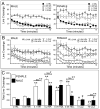
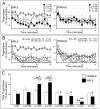
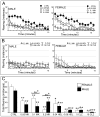
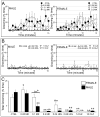
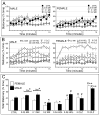
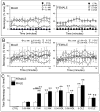
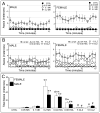
Similar articles
-
Local NMDA receptor hypofunction evokes generalized effects on gamma and high-frequency oscillations and behavior.Neuroscience. 2017 Sep 1;358:124-136. doi: 10.1016/j.neuroscience.2017.06.039. Epub 2017 Jul 1. Neuroscience. 2017. PMID: 28676240
-
A single application of MK801 causes symptoms of acute psychosis, deficits in spatial memory, and impairment of synaptic plasticity in rats.Hippocampus. 2008;18(2):125-34. doi: 10.1002/hipo.20367. Hippocampus. 2008. PMID: 17924525
-
Effects of coincident 5-HT1A receptor stimulation and NMDA receptor antagonism on L-DOPA-induced dyskinesia and rotational behaviors in the hemi-parkinsonian rat.Psychopharmacology (Berl). 2008 Jul;199(1):99-108. doi: 10.1007/s00213-008-1135-6. Epub 2008 Jun 11. Psychopharmacology (Berl). 2008. PMID: 18545986
-
Does the noncompetitive NMDA receptor antagonist dizocilpine (MK801) really block behavioural sensitization associated with repeated drug administration?Trends Pharmacol Sci. 1998 Nov;19(11):447-51. doi: 10.1016/s0165-6147(98)01255-3. Trends Pharmacol Sci. 1998. PMID: 9850608 Review.
-
Long-lasting changes in hippocampal synaptic plasticity and cognition in an animal model of NMDA receptor dysfunction in psychosis.Neuropharmacology. 2013 Nov;74:48-58. doi: 10.1016/j.neuropharm.2013.01.001. Epub 2013 Jan 31. Neuropharmacology. 2013. PMID: 23376021 Review.
Cited by
-
MK-801 treatment affects glycolysis in oligodendrocytes more than in astrocytes and neuronal cells: insights for schizophrenia.Front Cell Neurosci. 2015 May 12;9:180. doi: 10.3389/fncel.2015.00180. eCollection 2015. Front Cell Neurosci. 2015. PMID: 26029051 Free PMC article.
-
Sex Differences Distinguish Intracortical Glutamate Receptor-Mediated Regulation of Extracellular Dopamine Levels in the Prefrontal Cortex of Adult Rats.Cereb Cortex. 2016 Feb;26(2):599-610. doi: 10.1093/cercor/bhu222. Epub 2014 Sep 26. Cereb Cortex. 2016. PMID: 25260707 Free PMC article.
-
Sex differences in brain-derived neurotrophic factor signaling and functions.J Neurosci Res. 2017 Jan 2;95(1-2):328-335. doi: 10.1002/jnr.23863. J Neurosci Res. 2017. PMID: 27870419 Free PMC article. Review.
-
Partial mGlu5 Negative Allosteric Modulator M-5MPEP Demonstrates Antidepressant-Like Effects on Sleep Without Affecting Cognition or Quantitative EEG.Front Neurosci. 2021 Jul 2;15:700822. doi: 10.3389/fnins.2021.700822. eCollection 2021. Front Neurosci. 2021. PMID: 34276300 Free PMC article.
-
Postnatal MK-801 treatment of female rats impairs acquisition of working memory, but not reference memory in an eight-arm radial maze; no beneficial effects of enriched environment.Psychopharmacology (Berl). 2015 Jul;232(14):2541-50. doi: 10.1007/s00213-015-3890-5. Epub 2015 Mar 7. Psychopharmacology (Berl). 2015. PMID: 25743756
References
-
- Andine P, Widermark N, Axelsson R, Nyberg G, Olofsson U, Martensson E, Sandberg M. Characterization of MK-801-induced behavior as a putative rat model of psychosis. J Pharmacol Exp Ther. 1999;290:1393–1408. - PubMed
-
- Barak S. Modeling cholinergic aspects of schizophrenia: focus on the antimuscarinic syndrome. Behav Brain Res. 2009;204:335–351. - PubMed
-
- Becker JB, Robinson TE, Lorenz KA. Sex differences and estrous cycle variations in amphetamine-elicited rotational behavior. Eur J Pharmacol. 1982;80:65–72. - PubMed
Publication types
MeSH terms
Substances
Grants and funding
LinkOut - more resources
Full Text Sources
Other Literature Sources

